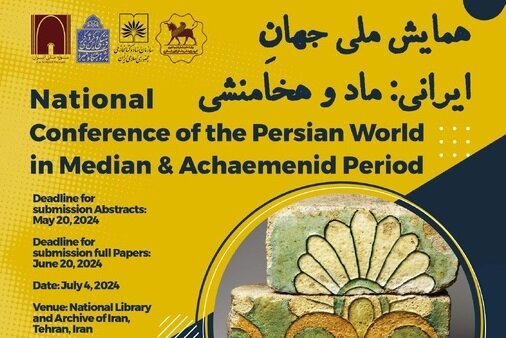Conference to explore Iran during Median, Achaemenid periods

TEHRAN - On July 4th, a significant academic gathering is set to take place at the National Library and Archive of Iran in Tehran.
Organized by the Tissaphernes Archaeological Research Group in collaboration with the Cultural Heritage, Handicrafts, and Tourism Organization, as well as the National Museum of Iran, the National Conference of the Persian World in the Median & Achaemenid Periods promises to delve into two historical eras of the Iranian plateau.
The conference aims to shed light on the Iranian world during the rise of the Median Empire and subsequently, the Achaemenid Empire, CHTN reported on Saturday.
Scholars and researchers from various academic institutions have been invited to present their papers, offering insights into different aspects of the ancient Persian civilization.
Among the focal points of the conference are themes such as “Religion, Art, and Architecture,” “Cultural and Social History,” “Unearthed Archaeological Discoveries,” “Economy, Livelihood, and Trade,” “Political and Administrative Geography,” “Iran’s Borders and Historical Geography,” and “Iran’s Interactions with its Neighbors.”
The Medes were one of the Indo-European people who entered northeastern Iran probably as early as the 17th century BC and settled in the plateau land that came to be known as Media.
In fact, the ancient country of northwestern Iran was generally corresponding to the modern regions of Azarbaijan, Kurdestan, and parts of Kermanshah.
As mentioned in Britannica, Media first appears in the texts of the Assyrian king Shalmaneser III (858–824 BC), in which peoples of the land of “Mada” are recorded. The inhabitants came to be known as Medes.
By the victory in 550 of the Persian chief Cyrus II the Great over his suzerain, Astyages of Media, the Medes were made subject to the Persians. In the new Achaemenian Empire, they retained a prominent position; in honor and war, they stood next to the Persians, and their court ceremonial was adopted by the new sovereigns, who in the summer months resided in Ecbatana.
Achaemenid’s kings of the older line were Cyrus I, Cambyses I, Cyrus II (the Great), and Cambyses II. After the death of Cambyses II (522 BC), the junior line came to the throne with Darius I. The dynasty became extinct with the death of Darius III, following his defeat (330 BC) by Alexander the Great.
The empire, founded by the Persian kings Cyrus and Darius, stretched from the Balkans to Central Asia at its peak. It was the first state model based on the diversity and tolerance of different cultures and religions.
AM
Leave a Comment